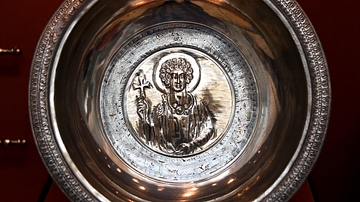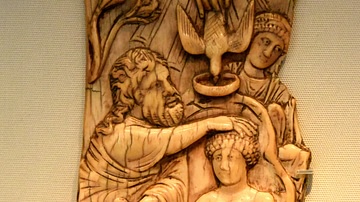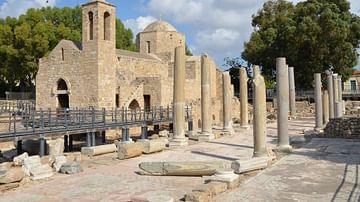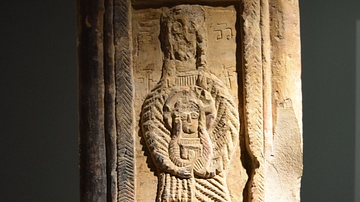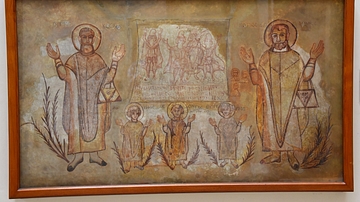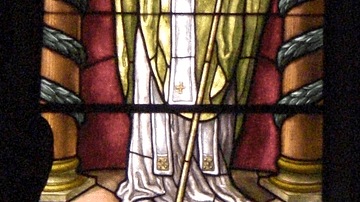Illustration
Censers were used for burning incense, which was a popular religious rite in eastern Christian churches. This one would have been suspended on chains, threaded through the holes in the plaques attached to the rim. Each side is decorated with the head and shoulders of figures shown with halos. These represent Christ, flanked by the saints Peter and Paul, and the Virgin Mary between Saints John and James. Part of the Cyprus Treasure.
At the end of 1800s CE, villagers recovered a remarkable hoard of Byzantine silver while quarrying stone from the ancient ruins of Lambousa, a town on the north coast of Cyprus. The hoard was found near the Acheripoetos Monastery, which was built on the site of an earlier Christian church from 500s CE. The pieces in the Cyprus Treasure may have originally belonged to this church.
Circa 602-610 CE. Made in Constantinople, modern-day Istanbul, Turkey; found at Acheripoetos Monastery, Kyrenia, modern-day Nicosia, Cyprus. (The British Museum, London).
Cite This Work
APA Style
Amin, O. S. M. (2016, September 29). Hexagonal Censer from the Cyprus Treasure. World History Encyclopedia. Retrieved from https://www.worldhistory.org/image/5769/hexagonal-censer-from-the-cyprus-treasure/
Chicago Style
Amin, Osama Shukir Muhammed. "Hexagonal Censer from the Cyprus Treasure." World History Encyclopedia. Last modified September 29, 2016. https://www.worldhistory.org/image/5769/hexagonal-censer-from-the-cyprus-treasure/.
MLA Style
Amin, Osama Shukir Muhammed. "Hexagonal Censer from the Cyprus Treasure." World History Encyclopedia. World History Encyclopedia, 29 Sep 2016. Web. 19 Apr 2024.


